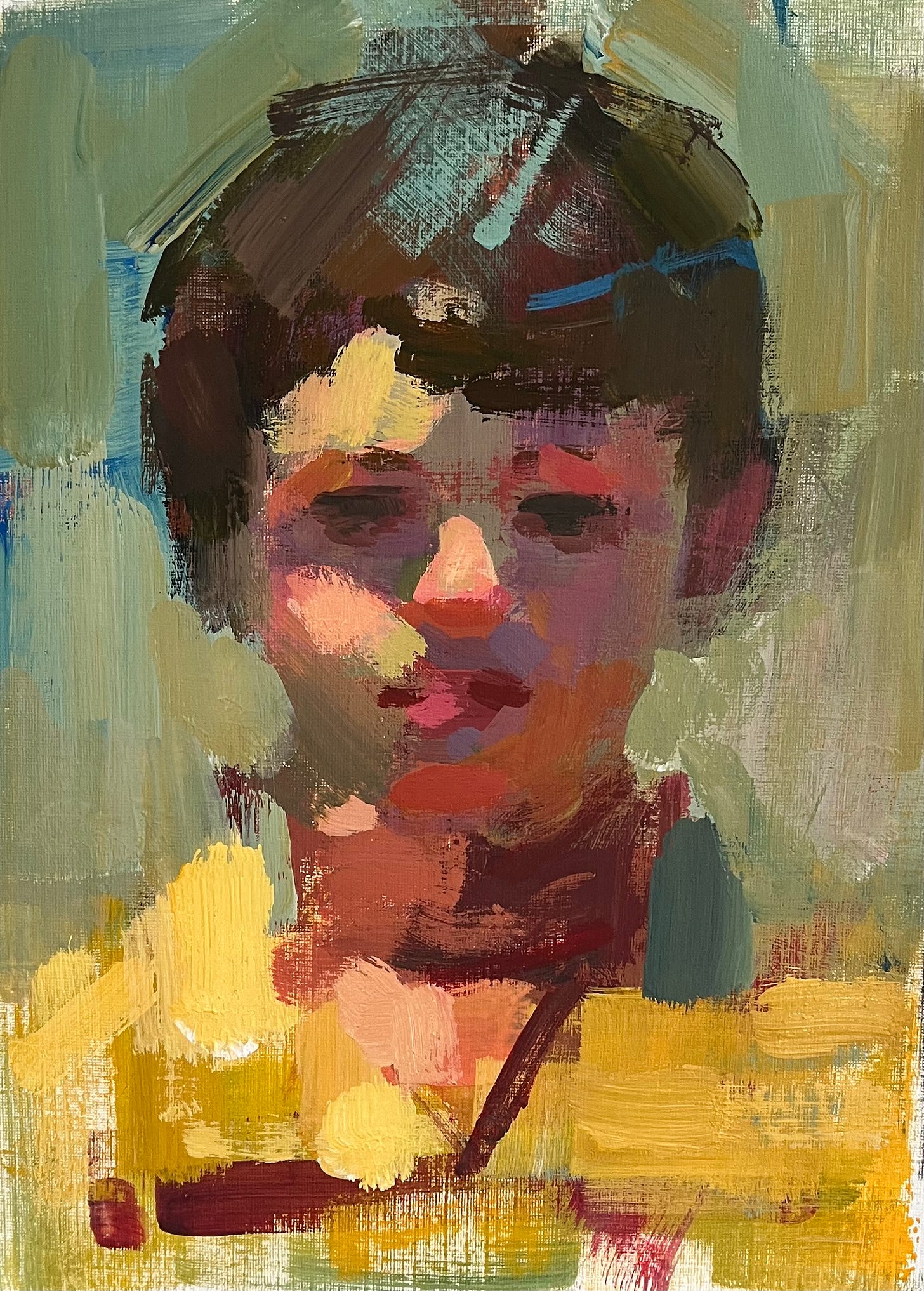I love hog bristle brushes in my oil painting for their expressive marks, but they don’t have a long survival rate with water media.
Hog bristles absorb water every time I swish my brushes and don’t fully release it. In a short time, brushes lose their shape and snap like this one which has only made 2 small, Flashe paintings to get to this state.
Synthetic bristles are recommended for water media and you can buy synthetics that are designed to mimic natural bristle. They’re durable, springy and ok, but they can’t make the jagged, broken marks that I enjoy.
The little girl below was done entirely with synthetics. The smooth, creamy marks, tightly-closed and with defined, abrupt ends are typical of nylon bristles. You can see that layering one colour over another generally obliterates the previous colour rather than adding to it to create optical mixing.
Compare it to this painting which was mainly done with hog bristle. Notice the difference in mark ends from the solid of synthetic to the tattered edges of hog.
Zooming in shows optical mixing as the bristles lay broken colour rather than smooth, fluid patches over previous colours.
The only way I could break a colour patch with the synthetics was to swiftly lay it on paint that was tacky but not fully dry, an effect that you can see in the girl’s hair. Because Flashe dries almost instantly, I had to move fast for this.
Acrylic painter would probably have more success with this as I don’t think the paint dries nearly as quickly.
Both paintings were done on the same textured mat board but the results are distinctly different.
So, I’ll keep sacrificing hog bristle brushes to the water bucket because I prefer their marks. I buy the cheapest brushes I can find - $2 to $5 each - reglue the invariably loose ferrules, and use them without regret.
If you’re wondering why my hog bristle oil brushes don’t suffer the same deterioration, it’s because I never expose them to water. I clean them by wiping out excess pigment, swishing the brushes in odourless mineral spirits, wiping again, and letting them dry. Any brushes that need heavy- duty cleaning get a thorough massage with Castille or Murphy’s Oil Soap, sit overnight to loosen the hardened paint, and then get a final rinse in OMS to remove the soap. They do soften a bit from this deep treatment but are still more springy than if I’d used water.
Knowing how to avoid degraded bristles allows me to splurge and buy higher-quality brushes for oil work. My favourites are Rosemary & Co Ultimate Long Flats but like most art store junkies, I also have most every other brand in production:)
Happy painting!










Were you using oil paint or Flashe, or acrylic? I like the hog bristle better but they are for oil right? I use synthetic ones with acrylic.
Thanks, Ingrid, for sharing your experience and wisdom. Things I have never thought about.